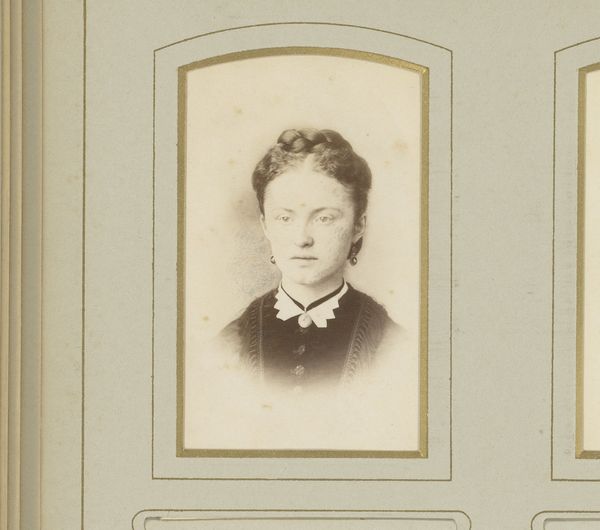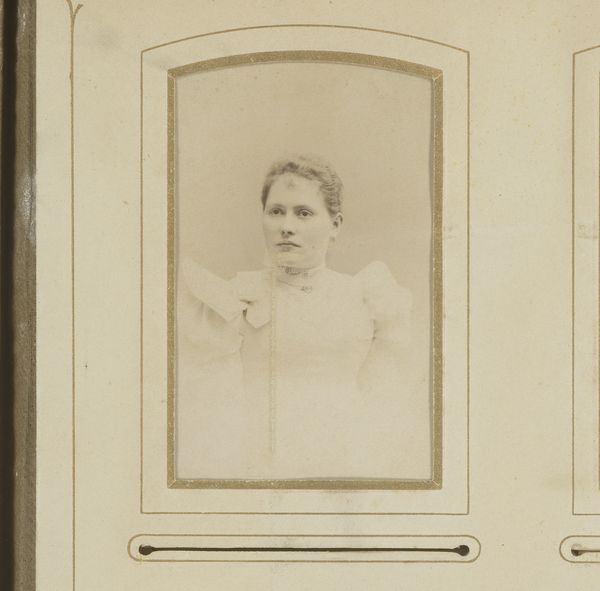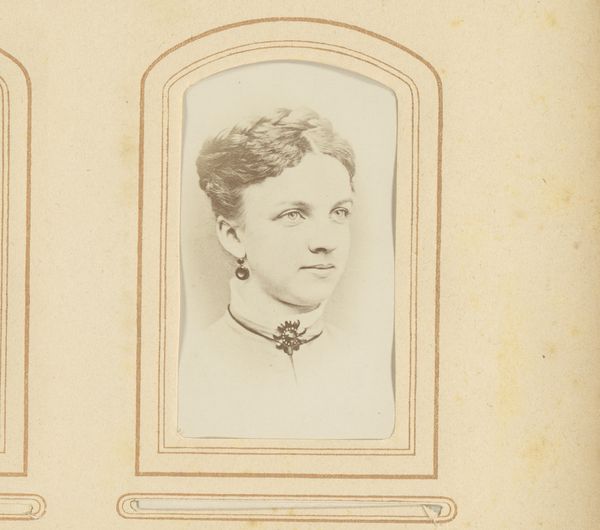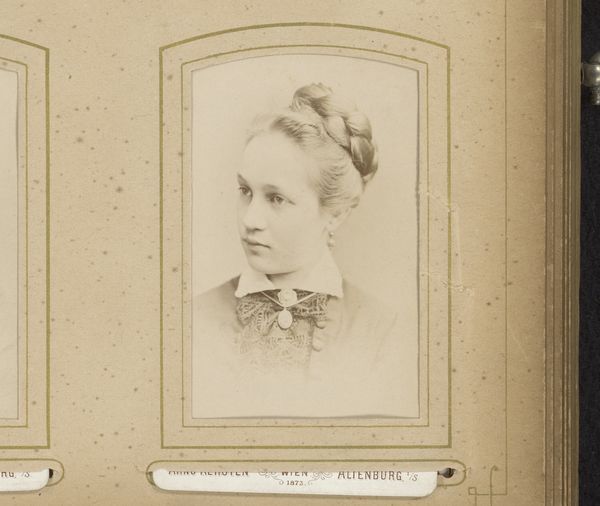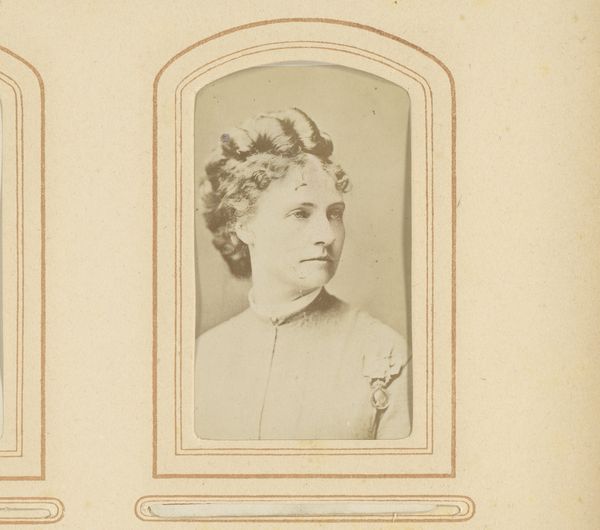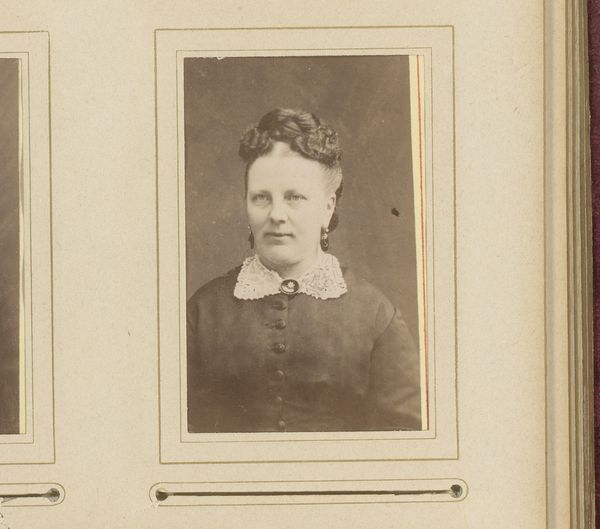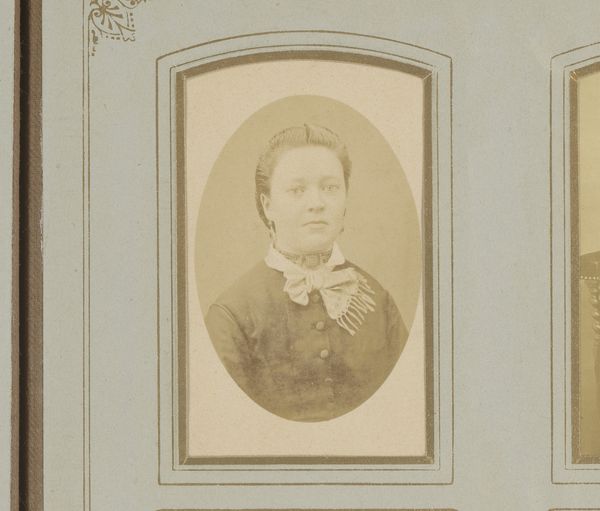
photography
#
portrait
#
photography
Dimensions: height 85 mm, width 51 mm
Copyright: Rijks Museum: Open Domain
Palmer Descamps made this small photographic portrait of a girl using the albumine print process, a popular method in the mid-19th century. Albumine printing involved coating paper with egg white and silver nitrate, making it sensitive to light. This produced a detailed image, with delicate tonal variations, as we see here. The process required a skilled hand to prepare the paper and control the exposure, reflecting the increasing professionalization of photography at the time. The rise of photography was tied to industrial capitalism, making portraiture more accessible to the middle class. While painting remained exclusive, photographic prints allowed a broader range of people to participate in visual culture. This portrait, with its delicate details and intimate scale, embodies the democratizing potential of photography in the 19th century, challenging traditional notions of art and representation. It shows how techniques rooted in chemistry and optics could capture and circulate images in an unprecedented way.
Comments
No comments
Be the first to comment and join the conversation on the ultimate creative platform.

